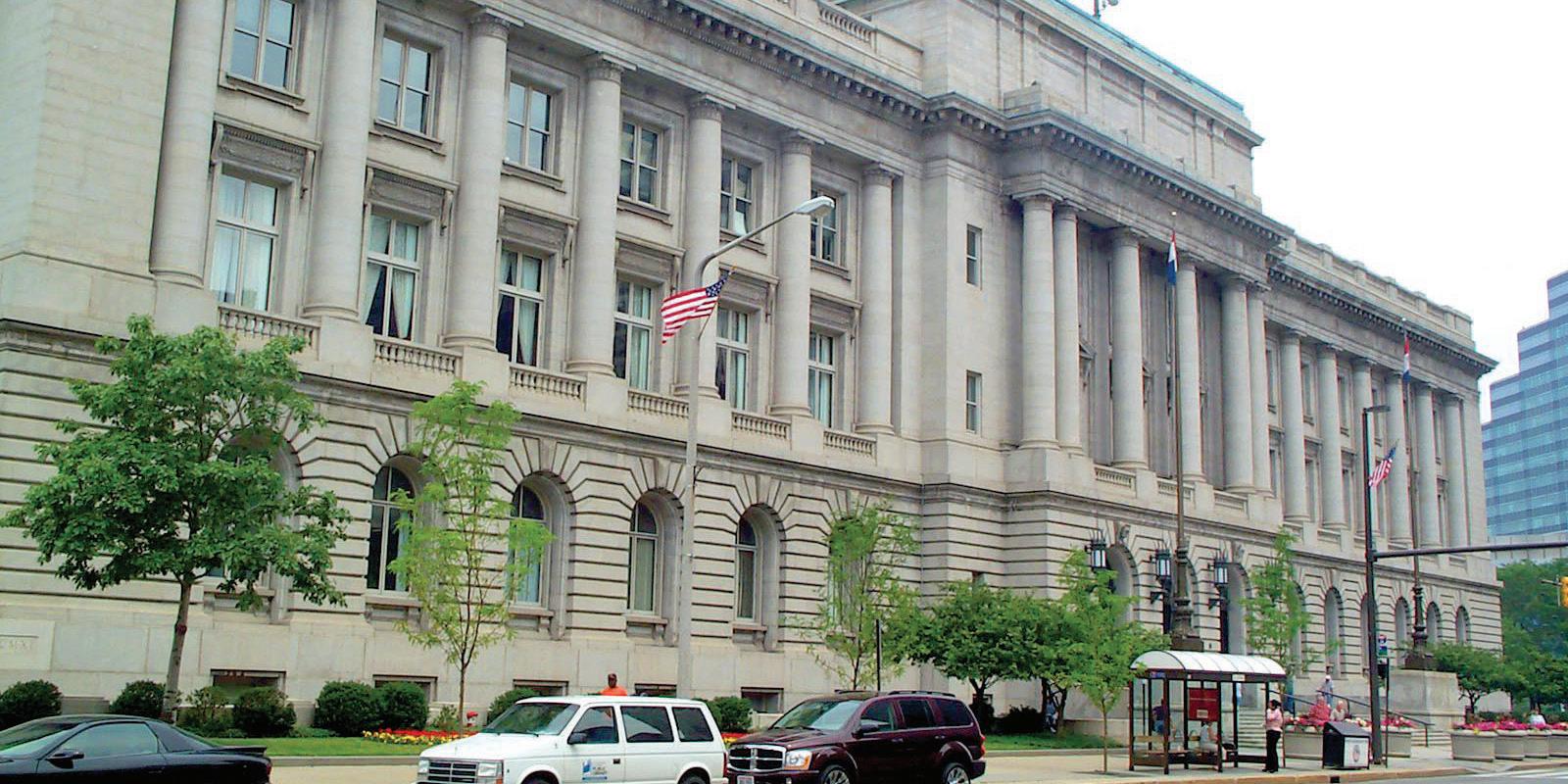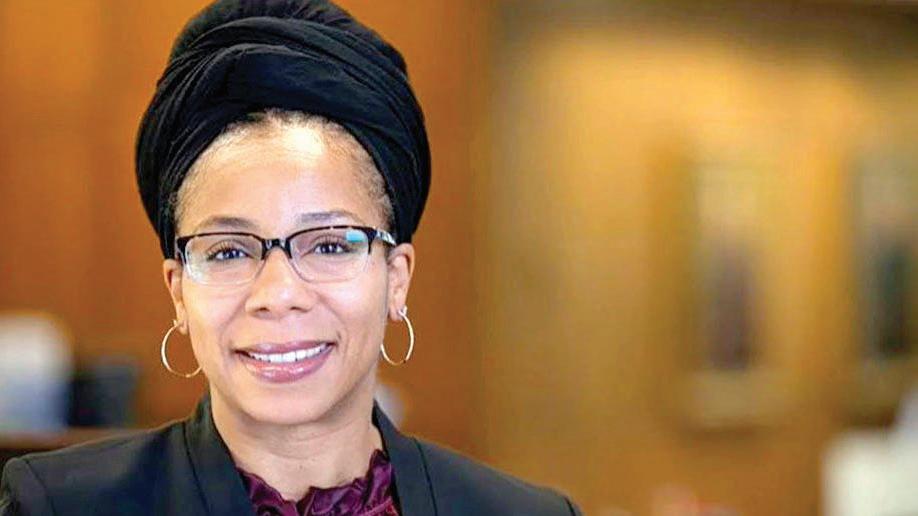
14 minute read
Upfront
UPFRONT UPFRONT

Advertisement


HERE ARE YOUR SEVEN OFFICIAL CANDIDATES FOR MAYOR OF CLEVELAND

WITH THE FILING DEADLINE
now in the rearview, seven candidates for Cleveland mayor remain. The six men and one woman below managed to gather at least 3,000 signatures and will appear on the Sept. 14 primary ballot. (Another candidate, Landry Simmons, submitted his signatures but failed to reach the 3,000 threshold and voluntarily withdrew Monday.)
Only two will advance to the November general election. And only one will succeed Mayor Frank Jackson, the city’s longest-serving mayor of all time. You’ve heard many of their names before, but here is a refresher now that the field has firmed up:
JUSTIN BIBB - 34-year-old nonprofit executive, Mt. Pleasant born and raised, touts both his lived and professional experience and represents perhaps the furthest tonal departure from Frank Jackson. Big on innovation, but stresses need for basic competency in city’s administrative duties. As first-time candidate, the knock on him tends to be his lack of political experience. Campaign slogan, “Cleveland can’t wait,” communicates need for urgency after lethargy of Jackson. Alum of KeyBank and nonprofit Urbanova. Corporate vibes. Extremely popular among educated millennials and zoomers.
ROSS DIBELLO - Passionate, if soft-spoken, attorney from West Park. Campaign activity has been highly concentrated on far west side. Ideologically progressive. Champion of procedural reforms to enhance “people power” at City Hall. Undeniable long shot, but has committed team of young, motivated volunteers. Campaign talking points center on issues of democracy building and scourge of money in politics. Extensive legal background, clear understanding of failings of criminal justice system, able to connect dots between those failings and Cleveland’s crushing poverty.
BASHEER JONES - Ward 7 Councilman. Race’s premier orator. Can fire up a crowd with ease. In lone council term — he narrowly defeated TJ Dow in 2017 — was unafraid to stake out lonely positions. Tireless advocate for Black folks and youth. Alliances, business practices and temperament have made him divisive figure in Ward 7, (constituents either adore or despise him), and initial campaign finance irregularities might betoken trouble.
KEVIN KELLEY – Current city council president. Old Brooklyn resident. Former social worker yanked to dark side by forces unknown. Backed by building and construction trades and corporate donors. Enormous campaign war chest. Of counsel at Porter Wright. Regarded with supreme distaste by many for his leading role in the antidemocratic actions of city council during his tenure. Has demonstrated repeatedly that he’ll work harder for guys like Len Komoroski and Scott Wolstein than any resident of Cleveland.
DENNIS KUCINICH - Former mayor, congressman, two-time presidential candidate. Disparaged as lefty kook, but launched campaign with public safety platform that included hiring 400 new police officers. Savvy (i.e. opportunistic) campaigner and charismatic debater. Lost Ohio gubernatorial primary in 2018 to Richard Cordray. Reviled for paid gig at Fox News and defense of Syria’s Bashar Al-Assad. Idiosyncratic ideology that defies traditional political spectrum. Public safety platform also includes new city division of peace, for example. Ardent environmentalist. Would be Cleveland’s oldest mayor of all-time. Campaign coincides with publication of Muny Light memoir.
ZACK REED - Former Mt. Pleasant councilman and 2017 mayoral candidate. Lost in landslide to Frank Jackson. Terrific slogan in 2017: “Nothing stops a bullet like a job.” Has failed to distinguish himself this time around but remains proponent of government transparency and openness at City Hall. Most recently employed as minority outreach guy for Republican Secretary of State Frank LaRose. Strong base on city’s southeast side. Tremendous wardrobe.
SANDRA WILLIAMS - Veteran legislator and only woman in the race. Would be Cleveland’s first Black
UPFRONT

female mayor. Quietly gathering institutional support and has locked up endorsements from region’s statehouse Dems. Represents closest thing to continuation of Frank Jackson leadership style: steady, experienced, deferential. Will be dogged by central role in HB6 scandal. Williams was one of bill’s co-sponsors and proposed key decoupling amendment on FirstEnergy’s behalf.
Candidates no longer in the race: Dick Knoth, Arthur O’Kostendt, Landry Simmons, Latorya Witcher, Lee Wilson
-Sam Allard

NAACP, CWRU Lead Backlash Over Deputy Monitor’s Forced Resignation
Reaction has been vocal and consistent in the wake of assistant police monitor Ayesha BellHardaway’s forced resignation over accurate remarks she made concerning the murder of George Floyd during an NPR interview. Those comments rankled head monitor Hassan Aden, whom BellHardaway has said threatened to remove her from her deputy position overseeing police reforms to a community engagement role. Seen by many as an action antithetical to the mission of the monitor team, the clash has drawn backlash from Case Western Reserve University, where Bell-Hardaway is a professor, researcher and director of the Social Justice Law Center, the Cleveland branch of the NAACP and Black Lives Matter Cleveland. “You would never fire a doctor for diagnosing a problem. Ayesha Bell Hardaway is diagnosing a problem. We have systemic issues in policing, and it is our job to make sure that we have the reform that’s necessary. No one wants to have a decree, but the reality is it’s necessary to get the reform that our citizens need,” said Danielle Sydnor of the Cleveland NAACP. In a statement, CWRU said, “This outcome is disappointing for many reasons, not least of which is the treatment of Professor Hardaway after six years of dedicated service on the monitoring team. Even more worrisome, however, is the signal sent regarding a body that ostensibly exists to serve the public interest. The group no longer will benefit from Professor Hardaway’s considerable expertise as a legal scholar, seasoned litigator, and former Cuyahoga County prosecutor. Going forward, other monitoring team members with concerns may not air them because of fear they, too, might be ousted.”
For her part, Bell-Hardaway said in her resignation letter, “I recognize that it is a tall order for some to accept the reality that violence exists in American policing and that systemic change is needed in order to address the longstanding and disproportionate impact that excessive use of force by police has had on Black people. However, the work of police reform is rooted in some of these hard truths.” -Vince Grzegorek
How the City of Independence Uses Zoning to Codify Segregation
When the Northeast Ohio Coalition for the Homeless learned that Independence Mayor Gregory Kurtz was exerting his influence to force Lutheran Metropolitan Ministry out of a contract with the Ramada Inn on Rockside Road (a story that appeared on Scene’s cover last issue), it attempted to get in touch.
Kurtz never responded, and so the organization penned an open letter earlier this month harshly condemning the suburb’s actions in the context of the pandemic.
“Rather than responding to the immediate housing and social service needs of our neighbors, the city chose to install a mobile police surveillance unit near the hotel and to expand the city’s nuisance ordinance to include commercial businesses,” the letter read. “These acts of criminalizing homelessness only deepen the trauma and prevent people from finding a safe place to call home.”
The letter also focused on the persistence of racist housing policies, and noted that in Independence, zoning laws prohibit multifamily housing units anywhere in the city.
“Local and national research provides strong evidence on how zoning is a tool to further codify racism, classism, and segregation. Decades of racist housing policy (redlining, residential segregation, white flight, etc.) have created this reality and reiterated the ideals of property and profit over human life and dignity,” the letter read.
Cleveland.com columnist Leila Atassi highlighted these policies as well in her column earlier this month on the Independence controversy and Cuyahoga County Executive Armond Budish’s complicity in it.
Michael Lepley of the Fair Housing Center for Rights and Research confirmed to Scene that Independence has excluded multifamily housing via zoning. And as NEOCH pointed out in its letter, this makes the community virtually off-limits for renters, working class, and working poor people. Owning a single-family home is the only way to live there, and the median home value in Independence is nearly $300,000.
Last year, the Fair Housing Center analyzed housing laws in Cuyahoga County municipalities and found that Independence was one of 11 with this type of exclusionary zoning on the books. Independence joins the City of Highland Heights; the Villages of Bentleyville, Bratenahl, Brooklyn Heights, Gates Mills, Glenwillow, Hunting Valley, Moreland Hills, and Walton Hills; and Chagrin Falls Township.
In a more recent report, the Fair Housing Center also found that Independence was one of only two school districts in the county — Bay Village is the other — where multifamily housing was “nearly entirely” excluded. The report found that in the municipalities of most outer-ring suburban school districts, multifamily housing is permitted on only 5 percent or less of the municipality’s total land. That’s the case in Brecksville-Broadview Heights City School District, Chagrin Falls Exempted Village Schools, Mayfield City School District, Orange City School District, Richmond Heights Local Schools, Solon City School District, and Strongsville City Schools. (In the Bay Village and Independence School Districts, multifamily housing is permitted on less than one percent of the land.)
Though Independence Mayor Greg Kurtz denied the assertions in NEOCH’s letter and said it was “outrageous” for NEOCH to attack Independence “with the broad brush of national injustices and ‘wrongs of history,’” the Fair Housing Center report explained that zoning is indeed a mechanism for the preservation of racial segregation.
“Zoning is not the sole explanatory factor of racial segregation in Cuyahoga County, but one of many tools that caused racial segregation,” it states. “Explicit refusal to rent or sell based on race, blockbusting, and
racial steering by real estate agents caused segregation. Redlining, strategic municipal disinvestment, and urban renewal caused segregation. Highway construction and white flight to the suburbs caused segregation, as did municipal fragmentation paired with exclusionary zoning. What makes zoning different is that it codifies racially segregated living patterns, and while many of the other factors listed have been discredited or made illegal, zoning persists. Zoning is part of the structure of racism that maintains racial segregation and racial inequality.”
Independence, for the record, is 96% white. And as NEOCH has argued and as history demonstrates,
DIGIT WIDGET
75-21
Vote by the Ohio House of Representatives to expel former House Speaker Larry Householder from his elected position, after accepting and distributing $60 million from FirstEnergy to secure passage of HB6, what federal investigators have called the largest racketeering scandal in the state’s history.
1857
The last time someone was expelled from the Ohio House of Representatives.
379,589
Cleveland’s population, according to the latest estimates from the U.S. Census Bureau, above the threshold at which city council would need to eliminate two wards and redraw ward boundaries.
500 feet
Length of new Wendy Park Bridge, which opened last week, and now connects the neighborhoods of the near west side to Whiskey Island and miles of local bike trails.
Opinion: Stop Trying to Make “Kindland” Happen. Kindness Won’t Erase Poverty, Violence and Racism in Cleveland.
They’re at it again.
Having failed to reinvent Cleveland as the “epicenter for all things blockchain,” (Blockland), and having failed to manufacture the momentum required to redefine the region as a “vast proving ground for innovation,” (Betaland), local leaders are now attempting to remake Northeast Ohio as the “kindest place in the nation.” The initiative is known as Kindland.
Whether Kindland is a grift or merely a stupid idea hatched by wealthy superlative-imperativeafflicted people in the suburbs remains to be seen. It was launched last year by the Mayfieldbased nonprofit Values in Action Foundation in partnership with a number of local organizations for whom kindness is strictly an extracurricular activity.
During the pandemic’s early months, it attempted to capitalize on the inspiring stories of “local heroes” and “courage, caring and compassion” that flooded social media: corporations donating personal protective equipment to frontline workers and so forth.
But due to its progenitors’ lack of imagination and/or the strictures of their worldviews, Kindland quickly came to resemble other civic projects conceptualized by Cleveland elites. That is to say, it disclosed its neoliberal bent.
“What company doesn’t want kind workers?” The introductory Kindland guest column inquired last year. “If Cleveland became Kindland and developed a reputation as a kind, respectful and responsible community, would this become an economic development draw? Would companies relocating gravitate to our region? Would kindness increase productivity and happiness among workers? Employee engagement studies conducted by the University of California indicate that it would.”
Kindness at these bozos’ hands is not, in other words, the basic moral value one teaches young children with an assist from Jesus Christ: treat others as you’d want to be treated, etc. It is actually a corporate efficiency tool, an economic development strategy, with a gravysplashed side of paternalism. (If you pummel your employees with nonstop messaging about being “kind, respectful and responsible,” maybe they’ll think twice about agitating for a union or demanding a living wage.)
The answer to the questions posed in the column above, for the record, is no. Employee engagement studies aside, employers now have mountains of evidence at their disposal showing that increased pay, paid time off, healthcare and other benefits are the surest ways to increase worker productivity and happiness, or even to hire workers at all. And — with all due respect — the purported kindness of a city’s workforce wouldn’t even crack the top 20 reasons why a company would relocated to a new city.
For these reasons and others, the Kindland script has undergone some edits. And lest you thought that a kindness initiative was a bit more subdued than the tech-infused moonshots of recent years, the new pitch glitters with a familiar, wildeyed ambition. Kindness will not just be an economic development draw for Cleveland. No no. Now it will be the elusive silver bullet that has the potential to remediate all of the city’s social ills.
Behold, the dumbest paragraph ever written, from the cleveland. com column yesterday reviewing Kindland’s first year:
What would a community called “Kindland” look like? Infant mortality would decrease; mentorship would increase; assistance and funding to young people who have business ideas would go up; jobs and life-skills training would be available and funded; cooperation and collaboration would be the norm; numbers of children living in poverty would plummet; learning, optimism and hope would increase; violence would decrease; Cleveland would have a happy and engaged workforce; kindness would enhance diversity, equity and inclusion; and, Cleveland would no longer be America’s poorest big city.
It’s pure fantasy.
Setting aside the perverse obsession with branding that makes these lunatics actually want to refer to Cleveland as Kindland — stop it — the most embarrassing element in the above is that its authors might actually believe what they say.
This is the naivety of a kindergartner. And it sounds absolutely deranged emanating from the region’s C-suites, with corporate and community sponsors like FirstEnergy, whose unprecedented kindness to Larry Householder led to the biggest corruption scandal in Ohio’s history.
Never mind that particular inconvenience, or for that matter the Irishtown Bend extortion scheme of the George Group, a “Friend of Kindland.” (It occurs to ask: Would the kindness of Tony George, who threatened to remove his 37 restaurants from Cuyahoga County if it passed an LGBTQ+ charter amendment, “enhance diversity, equity and inclusion” in the region?)
Do the Kindland promoters think that a few more dollars to the United Way workplace giving campaign each year will make child poverty plummet? Do they think that a Saturday morning corporate outing with Habitat for Humanity will end the housing crisis? Do they think that one evening per month with a troubled youth will put a dent in gun violence?
They might. And for the record, all those things are great. Individual acts of kindness ought to be promoted among young people and adults. The golden rule really is one to live by. And as the first Kindland post suggested, kindness may indeed have a viral effect that could “infect” others and lead to more dignity and compassion for all.
But individual acts of kindness do not constitute systemic solutions to poverty, violence or racism. That requires policy interventions. And it often means legislation or allocation of public dollars in conflict with the preferences of corporate interests and wealthy individuals, who for obvious reasons love elevating politically neutral priorities like “kindness.”
One of the goals of the Kindland initiative was to document 1 million acts of Kindness in 2021. The column Tuesday, however, reported that more than 11 million such acts had already been tallied, including every shot administered at the Wolstein Center and every meal distributed by the Greater Cleveland Food Bank during the pandemic, (acts which call into question the record keeping of the initiative.)
This is a clear sign of the insufficiency of kindness as a solution. If Cleveland’s problems persist in spite of this overwhelming outpouring of kindness — 10 million more acts than the year-end goal! — then kindness on its own isn’t up to the task. And if the initiative’s backers recognize this, and truly care about improving the quality of life metrics they’ve cited, the solutions aren’t a mystery. -Sam Allard




